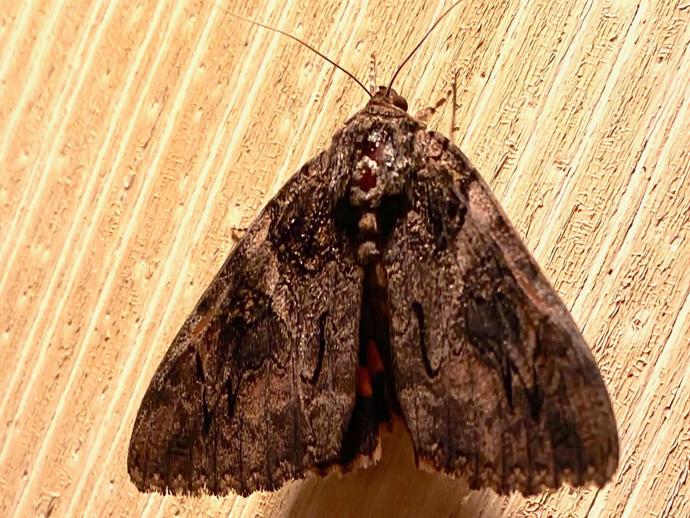September 30, 2020
We're counting down my top five favorite finds from Saturday's Virginia BioBlitz 2020, and number three is the very first critter I spotted that morning, hanging out right on my front porch. This is an underwing moth (genus Catocala)!
At first glance, underwing moths just look like fairly large, drab, well-camouflaged moths. However, the moment you startle one and it takes flight, you immediately notice what makes it unique: the dull forewings conceal a pair of brightly colored hindwings! Check out the slow-motion video I shot to see just what those hindwings look like in flight!
So what's the purpose of having visually-striking wings that are usually concealed? When these moths are startled by a predator and take flight, it's believed that the sudden flash of the hindwings (which can be red, orange, white, or blue, depending on the species) resemble the eyes of a predator. If you're a bird that was going in for a tasty snack and you suddenly see a pair of mean-looking eyes appear out of nowhere, you're probably going to hesitate, giving the underwing moth just enough time to make its escape.
This is a good thing because underwing moths are supposedly pretty tasty (note: I did not confirm this for myself). In addition to their brightly colored hindwings, they also have well-developed hearing organs that help them avoid nocturnal predators like bats.
There are more than 250 species of underwing moths, about half of which can be found in North America. They're mostly active after dark. If you'd like to see one for yourself, you can apparently attract them by smearing a tree trunk with a combination of brown sugar, fermented fruit, and beer. You might want to make sure your neighbors aren't out for a stroll before you do that.
ABOUT #BenInNature
Social distancing can be difficult, but it presents a great opportunity to become reacquainted with nature. In this series of posts, Administrator of Science Ben Williams ventures outdoors to record a snapshot of the unique sights that can be found in the natural world. New updates are posted Monday - Friday, with previous posts highlighted on the weekends.
NATURE PHOTO IDENTIFICATIONS If you discover something in nature that you would like help identifying, be sure to message us right here on Facebook with a picture (please include location and date of picture) and we'll have our experts help you identify it!

 Hours & Admissions
Hours & Admissions Directions
Directions

